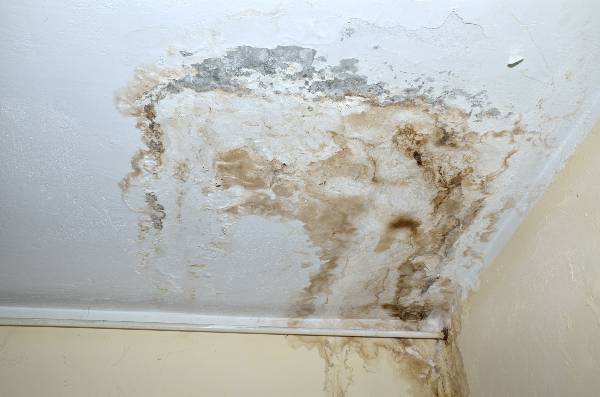What're your opinions concerning Locating water leaks?

Early discovery of dripping water lines can alleviate a prospective disaster. Some tiny water leakages may not be visible.
1. Check Out the Water Meter
Every residence has a water meter. Examining it is a surefire way that helps you uncover leaks. For beginners, shut off all the water resources. Guarantee no person will purge, use the faucet, shower, run the cleaning device or dish washer. From there, go to the meter as well as watch if it will certainly transform. Considering that no person is utilizing it, there must be no motions. That shows a fast-moving leakage if it moves. If you find no adjustments, wait a hr or 2 and check back again. This means you may have a slow leakage that can also be underground.
2. Inspect Water Usage
Analyze your water expenses as well as track your water consumption. As the one paying it, you need to discover if there are any kind of discrepancies. If you identify sudden changes, despite your intake being the same, it indicates that you have leakages in your plumbing system. Keep in mind, your water costs should fall under the exact same variety on a monthly basis. A sudden spike in your costs shows a fast-moving leakage.
On the other hand, a stable rise on a monthly basis, even with the very same practices, reveals you have a slow-moving leak that's additionally slowly intensifying. Call a plumber to completely examine your building, especially if you really feel a warm area on your floor with piping beneath.
3. Do a Food Coloring Examination
When it comes to water usage, 30% comes from toilets. If the color in some way infiltrates your dish throughout that time without flushing, there's a leakage in between the container and bowl.
4. Asses Exterior Lines
Don't forget to check your outdoor water lines too. Examination spigots by connecting a garden tube. Must water permeate out of the link, you have a loosened rubber gasket. Replace this and also make sure all connections are limited. If you've obtained a lawn sprinkler, it will certainly assist get it expertly examined and also preserved every year. One small leakage can lose lots of water and surge your water costs.
5. Evaluate and Analyze the Circumstance
Homeowners must make it a habit to check under the sink counters and also inside closets for any kind of bad odor or mold and mildew growth. These two red flags show a leak so punctual focus is required. Doing regular evaluations, also bi-annually, can conserve you from a significant problem.
Extra importantly, if you understand your residence is currently old, keep a watchful eye on your heating units, tubes, pipelines etc. Look for stainings and also compromising as many pipes as well as home appliances have a life expectancy. They will likewise naturally deteriorate as a result of tear as well as put on. Don't wait for it to rise if you believe leaking water lines in your plumbing system. Call a professional plumber right now so you don't end up with a dreadful mess in your house.
Early detection of dripping water lines can mitigate a potential catastrophe. Some small water leaks may not be visible. Inspecting it is a surefire method that assists you uncover leaks. One tiny leakage can throw away tons of water and surge your water expense.
If you think leaking water lines in your plumbing system, do not wait for it to intensify.
How to Know If Your Home Has a Hidden Leak
Water Meter Reveals Inexplicable Water Usage
If you’d like to test whether or not there’s a leak somewhere in your home, you can do this using your water meter. Here is how to conduct the test:
Don’t use any water in your home for at least 30 minutes; this also means not turning on faucets or water-using appliances.
Go outside, and check your water meter for activity.
If your water meter shows that there was activity, even though no one was using any water, this proves that there is a leak in your home.Visible Mold or Mildew Growth
Leaks behind walls create moist, dark environments that allow mold and mildew to grow and thrive. Eventually, you might see mold growth forming on the wall closest to a hidden leak.
If mold is growing in an area that receives a high amount of moisture, such as a bathroom, it may simply be an indication that better ventilation is needed. However, if you see mold growth on a wall or the ceiling in an area where you would not expect, you probably have a hidden leak.
Musty, Mildew Odor
Sometimes you might not be able to see the mold or mildew that is growing as a result of a leak. However, the smell can give the problem away just as easily. If you catch a whiff of something musty, there’s a good chance that old water is collecting somewhere in your home that you can’t see.
Stained/Warped Walls, Ceilings, or Floors
When your home soaks up water, a variety of red flags can become visible, including ceiling stains, bubbling drywall, warped walls, and sagging floors. While these issues can be caused by excess humidity, they can also be signs that a pipe or plumbing connection has started leaking behind your walls.
Inexplicably High Water Bill
After a while, you get a general sense for what your water bill should be. If you own a pool or sprinkler system, your bill will tend to be higher during summer. However, if you receive a water bill that seems especially high, and you can’t figure out what caused it, then you may have a hidden leak somewhere that’s increasing your bill.
https://www.plumbingjoint.com/blog/2019/july/how-to-know-if-your-home-has-a-hidden-leak/

I'm very curious about Hacks to detect leaks and I'm hoping you appreciated the entire blog posting. For those who enjoyed reading our page plz be sure to pass it around. Thanks for your time spent reading it.